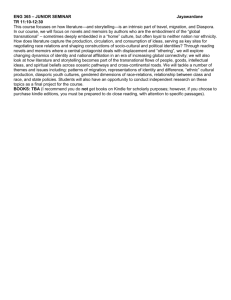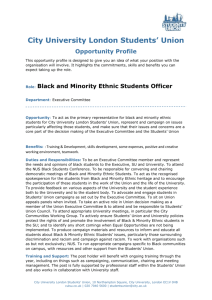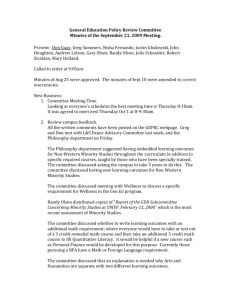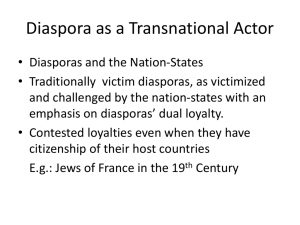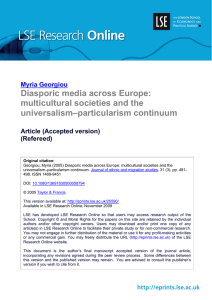The Nation Context – The Transnational Commonalities and
advertisement
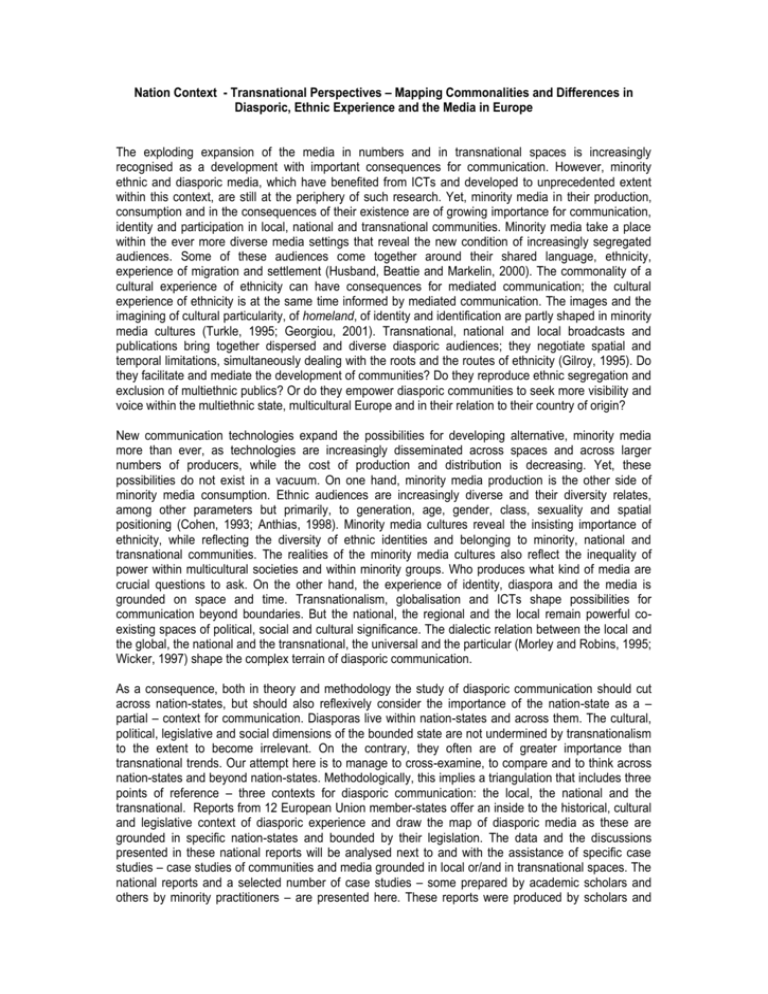
Nation Context - Transnational Perspectives – Mapping Commonalities and Differences in Diasporic, Ethnic Experience and the Media in Europe The exploding expansion of the media in numbers and in transnational spaces is increasingly recognised as a development with important consequences for communication. However, minority ethnic and diasporic media, which have benefited from ICTs and developed to unprecedented extent within this context, are still at the periphery of such research. Yet, minority media in their production, consumption and in the consequences of their existence are of growing importance for communication, identity and participation in local, national and transnational communities. Minority media take a place within the ever more diverse media settings that reveal the new condition of increasingly segregated audiences. Some of these audiences come together around their shared language, ethnicity, experience of migration and settlement (Husband, Beattie and Markelin, 2000). The commonality of a cultural experience of ethnicity can have consequences for mediated communication; the cultural experience of ethnicity is at the same time informed by mediated communication. The images and the imagining of cultural particularity, of homeland, of identity and identification are partly shaped in minority media cultures (Turkle, 1995; Georgiou, 2001). Transnational, national and local broadcasts and publications bring together dispersed and diverse diasporic audiences; they negotiate spatial and temporal limitations, simultaneously dealing with the roots and the routes of ethnicity (Gilroy, 1995). Do they facilitate and mediate the development of communities? Do they reproduce ethnic segregation and exclusion of multiethnic publics? Or do they empower diasporic communities to seek more visibility and voice within the multiethnic state, multicultural Europe and in their relation to their country of origin? New communication technologies expand the possibilities for developing alternative, minority media more than ever, as technologies are increasingly disseminated across spaces and across larger numbers of producers, while the cost of production and distribution is decreasing. Yet, these possibilities do not exist in a vacuum. On one hand, minority media production is the other side of minority media consumption. Ethnic audiences are increasingly diverse and their diversity relates, among other parameters but primarily, to generation, age, gender, class, sexuality and spatial positioning (Cohen, 1993; Anthias, 1998). Minority media cultures reveal the insisting importance of ethnicity, while reflecting the diversity of ethnic identities and belonging to minority, national and transnational communities. The realities of the minority media cultures also reflect the inequality of power within multicultural societies and within minority groups. Who produces what kind of media are crucial questions to ask. On the other hand, the experience of identity, diaspora and the media is grounded on space and time. Transnationalism, globalisation and ICTs shape possibilities for communication beyond boundaries. But the national, the regional and the local remain powerful coexisting spaces of political, social and cultural significance. The dialectic relation between the local and the global, the national and the transnational, the universal and the particular (Morley and Robins, 1995; Wicker, 1997) shape the complex terrain of diasporic communication. As a consequence, both in theory and methodology the study of diasporic communication should cut across nation-states, but should also reflexively consider the importance of the nation-state as a – partial – context for communication. Diasporas live within nation-states and across them. The cultural, political, legislative and social dimensions of the bounded state are not undermined by transnationalism to the extent to become irrelevant. On the contrary, they often are of greater importance than transnational trends. Our attempt here is to manage to cross-examine, to compare and to think across nation-states and beyond nation-states. Methodologically, this implies a triangulation that includes three points of reference – three contexts for diasporic communication: the local, the national and the transnational. Reports from 12 European Union member-states offer an inside to the historical, cultural and legislative context of diasporic experience and draw the map of diasporic media as these are grounded in specific nation-states and bounded by their legislation. The data and the discussions presented in these national reports will be analysed next to and with the assistance of specific case studies – case studies of communities and media grounded in local or/and in transnational spaces. The national reports and a selected number of case studies – some prepared by academic scholars and others by minority practitioners – are presented here. These reports were produced by scholars and practitioners in very limited time and practically with no resources. All contributors have worked enthusiastically and managed to collect valuable data; many of the national reports offer the first ever mapping of ethnic media in these countries. The presentation of the reports can only be the starting point for developing the discussion on media cultures, diaspora, transnationalism, exclusion and community. Note on Terminology Readers will notice that the scholars, whose work is presented here, use different concepts and/or the same concepts in different ways while discussing minority groups, communities and multiculturalism. The most controversial terms are those that relate to characterising the groups on study - diasporas, migrants, immigrants, ethnic groups, etc. The diversity in the use of concepts is unavoidable and relates to different research traditions and different academic perspectives. We would argue that differences in terminology and academic approaches do not reflect weakness or inconsistency; rather, they reflect the richness and diversity within ethnicity, diaspora and transnationalism studies.



